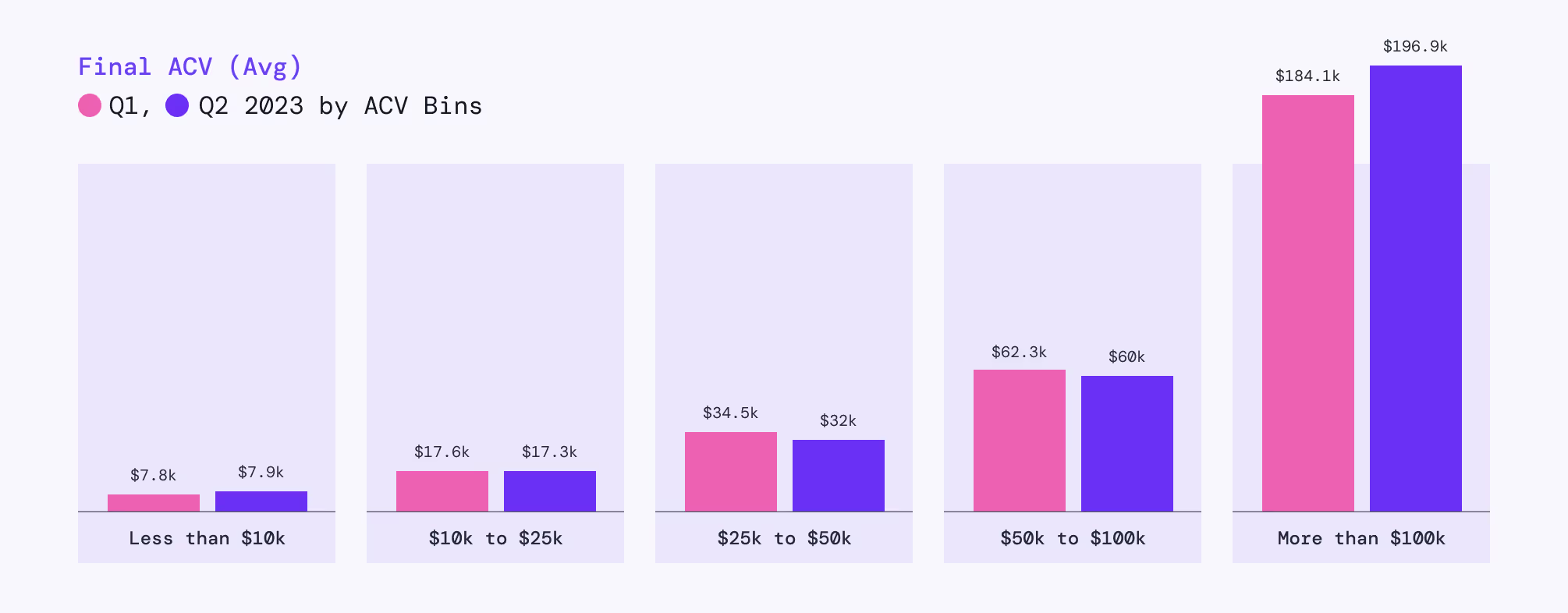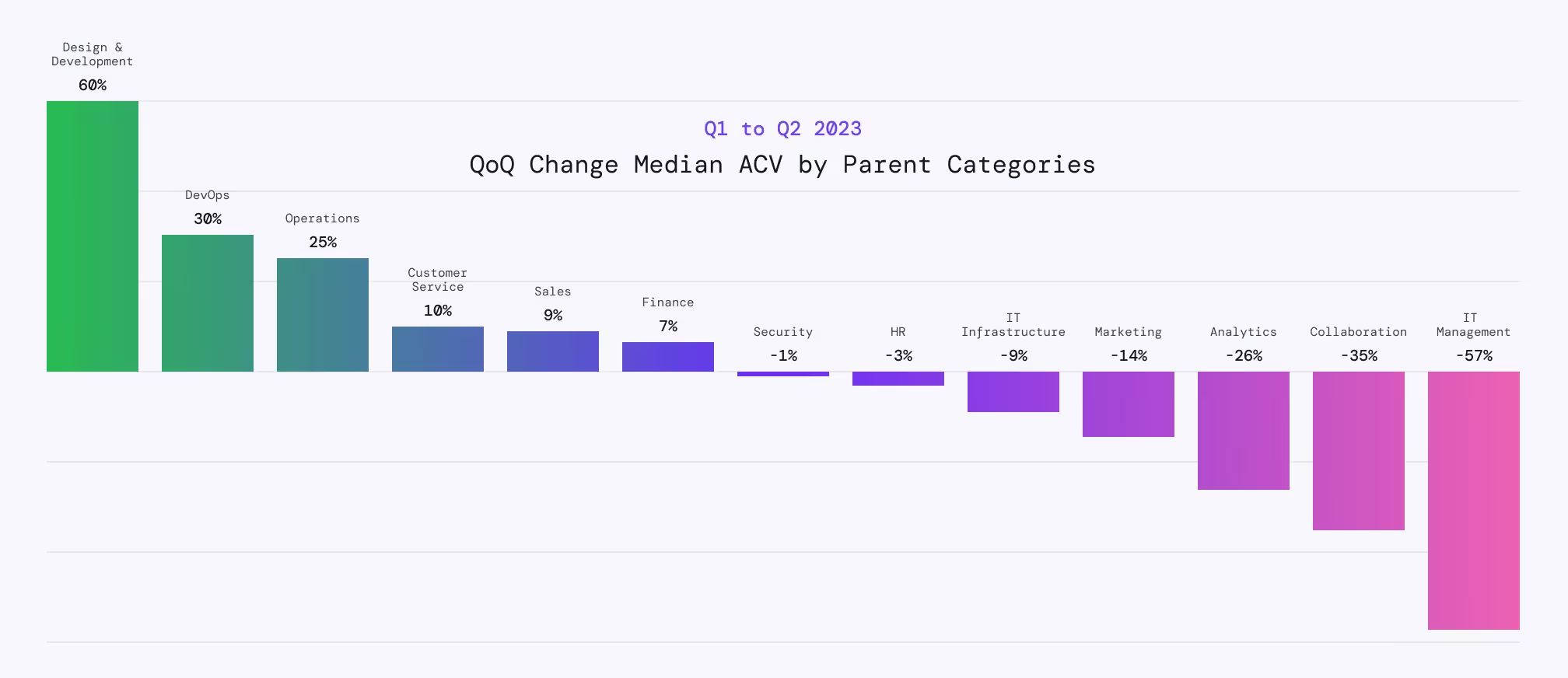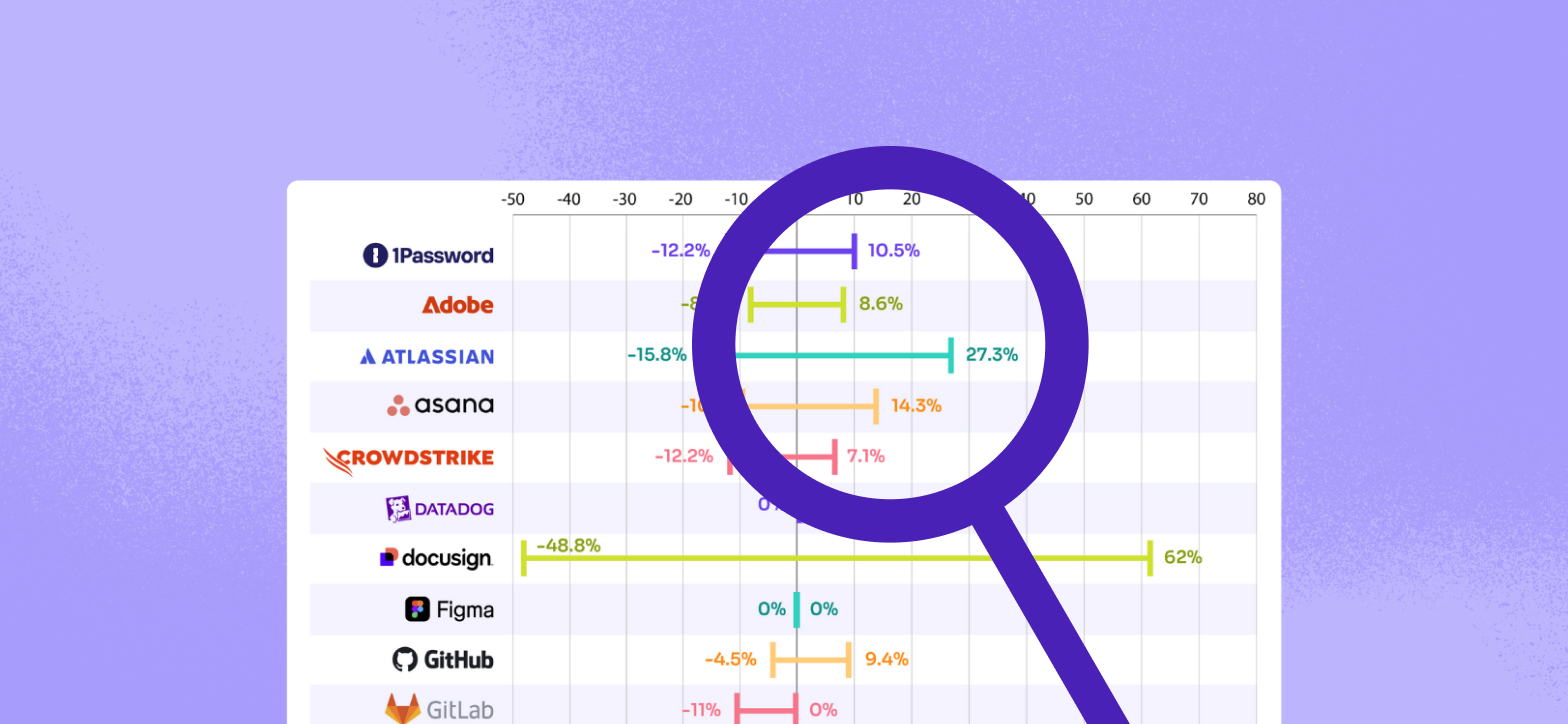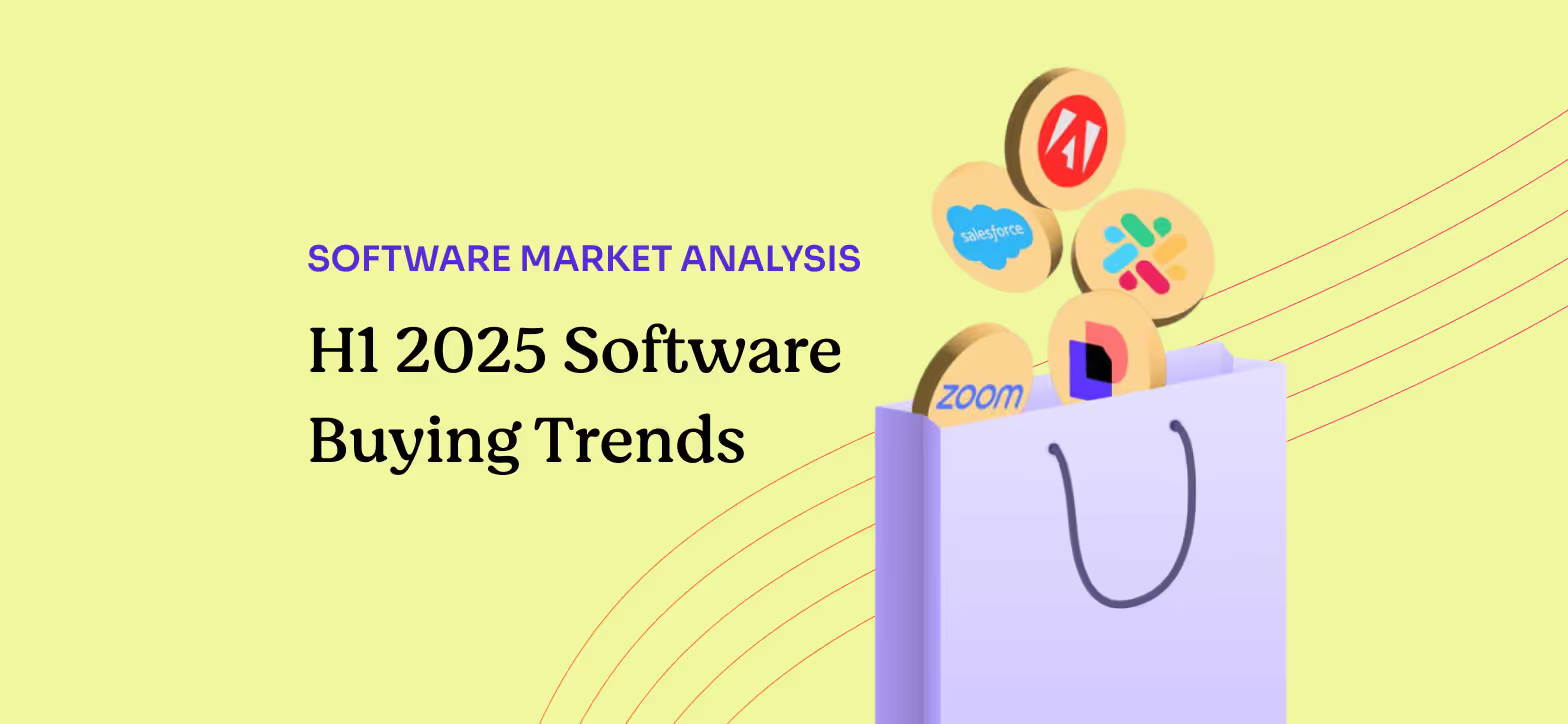Software continues to eat the world. But the overall economy? Well, the picture is decidedly mixed.
This means many companies will do a delicate dance for a bit longer, trying to reduce their software budgets while still getting access to the tools they need to get ahead.
The push and pull of 2023 trends are starting to intensify:
- Budget expansion is not budging. Businesses are still trying to find ways to decrease their SaaS budgets by 10% on average or increase their purchasing power to do more with the same budgets.
- Price hikes are on the rise. With net new purchase volume down 20%, SaaS sellers are turning to 5 to 20% price hikes as a way to keep revenue moving up and to the right.
With 2024 planning already kicking off for many companies, we analyzed more than 2,000 new software purchases and renewals for the top SaaS suppliers to unearth what moved in the first half of 2023 (Q1 vs Q2).
ACV is gridlocked
Annual contract values remain relatively flat as an aggregate, with the median unchanged from Q1 to Q2. The average did tick up 6.5%, which was skewed by a number of large contracts in the $100k+ cohort.

In the less-than-$100k cohorts, there were declines in these groups: $10k-$25k (-1.5%), $25k-$50k (-7%), and $50k-$100k (-3.7%). ACVs in a core segment of middle-market deals ($25k - $50k; approximately 25% of total contracts) were feeling the most pressure.
If you dig deeper, you’ll find that certain categories are benefiting from this environment while others are getting squeezed.
- Noticeable Q2 Expansion: Design & Development, DevOps, Operations, Customer Success, Sales, and Finance tools
- Noticeable Q2 Contraction: IT Management, Collaboration, Analytics, Marketing, and IT Infrastructure tools

Some of these swings make sense, while others might come as a surprise. We’ll be digging into more category-specific breakdowns in future posts.
Discounting isn’t dead
The average savings and discounts remained relatively flat, at ~11% across the board. Those saying that discounting is dead are dead wrong. To be fair, the magnitude of the swings across a smaller number of categories overpowered the smaller drops across most categories.
As with most large datasets, there are always micro-trends within the macro trend.
- Noticeable Discount Expansion: Design & Development, Marketing, Customer Success, DevOps, and Operations tools
- Noticeable Discount Contraction: Finance, Analytics, Security, IT Infrastructure, and HR tools

Deal velocity is increasing
OK, so this one may be a countertrend that Tropic is influencing and enabling for our customers vs market pain points. In Q1, we made a lot of investments in our product and negotiation services team to remove friction and increase efficiency—and it’s working. The amount of time from request to signature has dropped across all cohorts.

Again, this is not necessarily a reflection of the market at large. While Tropic’s data showed a 15% decrease from Q1 to Q2, experts we talk to say deals outside of Tropic are taking 20-50% longer.
That’s because every dollar is under a magnifying glass. Margins, bottom lines, and jobs are at risk, so leaders are proceeding with caution. Are we making the right purchase? Are we getting a good price? Does everyone approve? It’s yet another reason to check out Procurement Paradise. Time is money, and our platform, benchmarks, and expert advisors are helping businesses buy with confidence and speed.
Tips to navigate this environment and plan for 2024
Deals are still getting done, but creativity, openness, and empathy are key. Here are a few considerations:
1. Time is an important tool, for both buyers and suppliers.
Get ahead of your renewals, start those renewal conversations early, and give yourself the time to think creatively and critically. Work with each other. We’ve found that every transaction that starts at least 3 months in advance of the opt-out/renewal date leads to better outcomes—better terms, and better pricing.
2. Sellers, get scrappy again.
Don’t let your processes and systems hinder your deal creativity. Creative pricing discussions will always be met with internal implementation challenges. Partner with your teams to be resourceful again and do the non-scalable things. You’ll definitely have the CFO’s ear, and you should challenge everyone in the organization to be flexible and open.
3. If your product is mission-critical and hard to replace, be mindful of being exploitative.
No matter how sticky a product or platform is, going to a client company and suggesting a compounding 10 to 20% increase is questionable—because you know they have no choice and would find it difficult to replace your software. Especially in our current era of tight budgets. (Consider, for example, whether holding at your current price could help the company avoid a layoff). If you do have to do it, it better be tied to advancements in your product that map to ROI gains that justify the higher cost.
4. If your product is not mission-critical and/or the substitutes are “good enough,” then you are already feeling the heat. Your best bet: affirm the value and benefits your product provides.
If it’s a stretch to say your software is better at managing cash flow, reducing risk, and/or delivering tangible efficiencies, unfortunately, you’ll continue to face scrutiny. Still, consider this: nobody wants to replace a tool or change a process they’ve become accustomed to—no matter how easy the switch. Time to get creative, be open, and behave transparently.
5. Lead with empathy.
These are challenging times for both SaaS buyers and sellers. Salesforce and other companies have rolled out price hikes—due to a combination of factors including inflation, the growing competition for tech talent, new capabilities, and quite simply…the pressure to grow revenue.
Buyers have been caught off guard too, as finance departments pull the purse strings tighter than ever. Still, it’s in the most challenging times that creative, noteworthy events happen. Throw out any traditional “playbooks” and go back to the basics: ask, understand, empathize, and address matters creatively and critically.
To be sure, there’s no one-size-fits-all approach to any negotiation. But with these tips and other insights from Tropic, you’ll boost your chances of finding a way to reduce costs without cutting the tools your team needs.
Related blogs
Discover why hundreds of companies choose Tropic to gain visibility and control of their spend.








.avif)